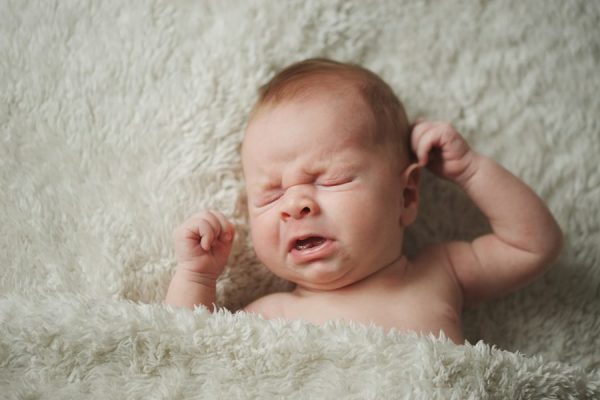What is whooping cough and why is it dangerous for babies?

Respiratory hygiene around babies is important to prevent whooping cough, says Dr Michael Nissen.
Whooping cough (or pertussis) is a highly contagious respiratory infection caused by the bacterium Bordetella pertussis. Whooping cough can affect people of any age, but complications can be particularly severe for babies and younger children.
Queensland is currently experiencing a surge in cases of pertussis, at a rate of 9.5 times the year-to-date average.
Children under 15 years of age account for 60 per cent of all cases since 1 January 2024.
RBWH Infectious Diseases specialist Dr Michael Nissen answers some common questions about whooping cough/pertussis.
How is whooping cough spread?
Pertussis is mainly transmitted by large droplet infection or direct contact with respiratory discharges of infectious people.
What are the symptoms?
For adolescents and adults, the infection may only cause a persistent dry cough. However, for babies and young children, whooping cough can be life threatening. Complications of whooping cough in babies include pneumonia, fits and brain damage from prolonged lack of oxygen due to severe and prolonged coughing.
At first, the infection is characterised by the onset of runny nose, sneezing, absent or low-grade fever, tiredness and a mild occasional cough. The cough gradually becomes paroxysmal – sudden increases in symptoms (after 1–2 weeks), and may end in vomiting, cyanosis (blue skin, lips, or nails) and/or a characteristic high-pitched inspiratory (inhale) ‘whoop’. Paroxysms may recur with subsequent respiratory illnesses for many months after the onset of pertussis.
Infants are less likely to have the inspiratory whoop and the runny nose stage and are more likely to present with gagging, gasping, cyanosis, apnoea (breathing stops and starts) or non-specific signs such as poor feeding or seizures.
What’s the best way to prevent whooping cough?
- Vaccination – Pertussis immunisation is recommended for all Australian children with the first dose of pertussis-containing vaccine given from 6 to 8 weeks of age, followed by doses at 4 and 6 months, a booster from 3.5-4 years of age, a booster at 12-17 years of age and a further booster at 65 years of age. It is also recommended for healthcare workers and people working or living with infants, including parents, grandparents, those planning pregnancy and childcare workers who have not previously had a dose of the acellular vaccine. It is recommended that booster doses for adults caring for infants should also receive a booster if they haven’t had a pertussis vaccination booster in the last 10 years.
- Early detection and treatment of known and suspected pertussis cases can reduce the risk of transmission
- Increased public awareness
Among the general public, it is important to raise awareness of:
- Encouraging people with coughing illnesses to seek early medical attention. This will facilitate timely treatment of pertussis cases (to reduce infectiousness) and follow up of high-risk contacts.
- Respiratory hygiene around babies, by encouraging people with coughing illnesses to avoid contact with infants under 6 months of age until a diagnosis is made and they are no longer infectious.
- Keep infectious cases at home.
- Identify and manage at risk contacts.
